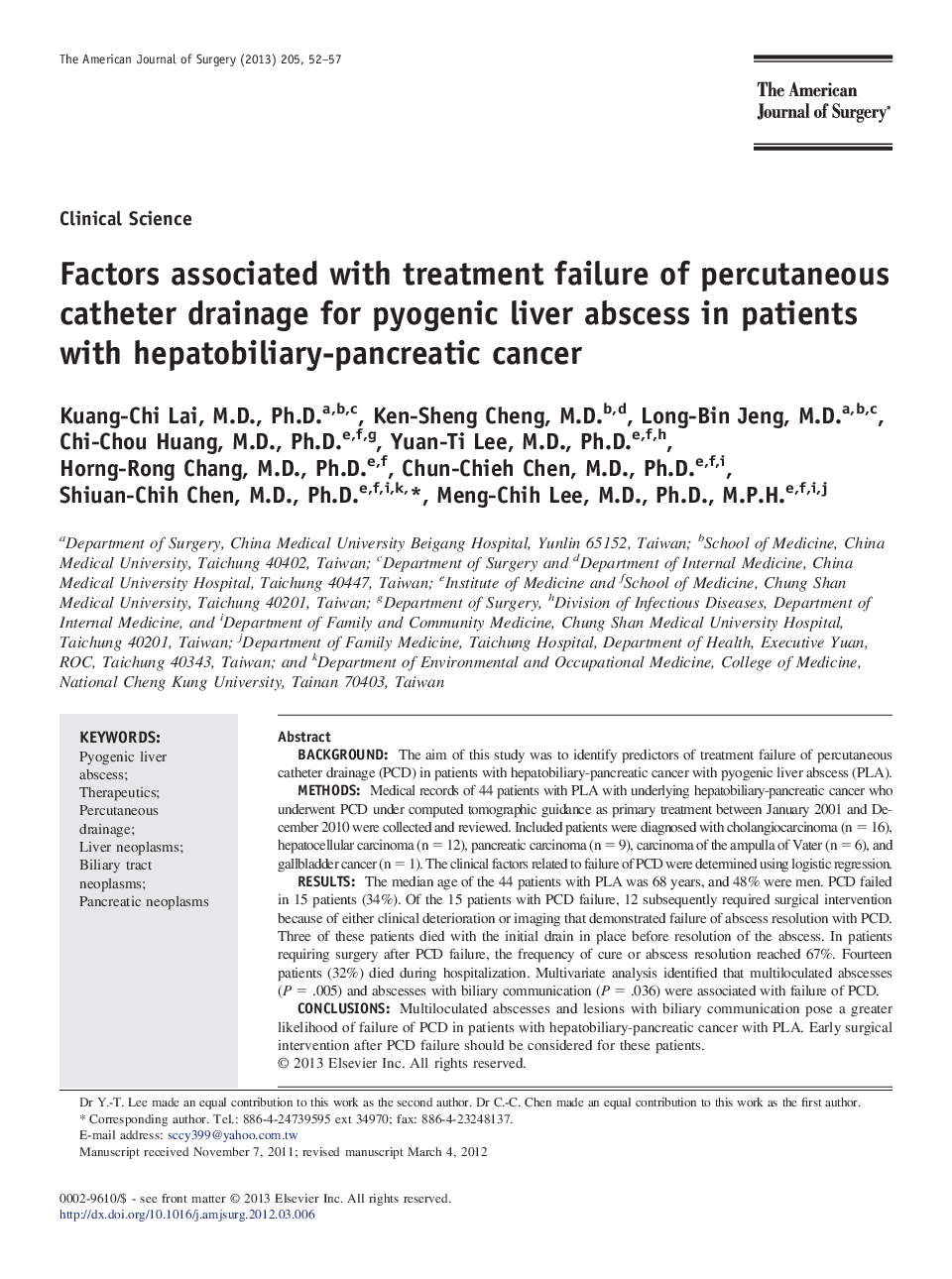| Article ID | Journal | Published Year | Pages | File Type |
|---|---|---|---|---|
| 4279460 | The American Journal of Surgery | 2013 | 6 Pages |
BackgroundThe aim of this study was to identify predictors of treatment failure of percutaneous catheter drainage (PCD) in patients with hepatobiliary-pancreatic cancer with pyogenic liver abscess (PLA).MethodsMedical records of 44 patients with PLA with underlying hepatobiliary-pancreatic cancer who underwent PCD under computed tomographic guidance as primary treatment between January 2001 and December 2010 were collected and reviewed. Included patients were diagnosed with cholangiocarcinoma (n = 16), hepatocellular carcinoma (n = 12), pancreatic carcinoma (n = 9), carcinoma of the ampulla of Vater (n = 6), and gallbladder cancer (n = 1). The clinical factors related to failure of PCD were determined using logistic regression.ResultsThe median age of the 44 patients with PLA was 68 years, and 48% were men. PCD failed in 15 patients (34%). Of the 15 patients with PCD failure, 12 subsequently required surgical intervention because of either clinical deterioration or imaging that demonstrated failure of abscess resolution with PCD. Three of these patients died with the initial drain in place before resolution of the abscess. In patients requiring surgery after PCD failure, the frequency of cure or abscess resolution reached 67%. Fourteen patients (32%) died during hospitalization. Multivariate analysis identified that multiloculated abscesses (P = .005) and abscesses with biliary communication (P = .036) were associated with failure of PCD.ConclusionsMultiloculated abscesses and lesions with biliary communication pose a greater likelihood of failure of PCD in patients with hepatobiliary-pancreatic cancer with PLA. Early surgical intervention after PCD failure should be considered for these patients.
